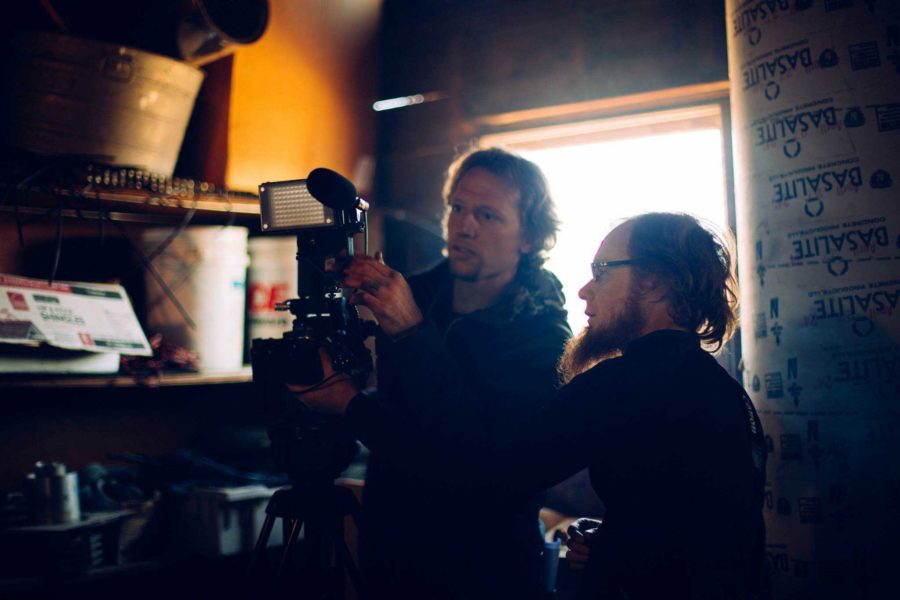“The Hobbit.” “Robocop 2014.” “42: The Jackie Robinson Story.” “Thor: the Dark World.” All high-budget blockbuster movies. All of them shot on Red’s ultra-high resolution Scarlet and Epic series video cameras. Now for the first time, the Santa Rosa Junior College’s digital filmmaking group gets to come down with a case of Scarlet Fever by shooting commercials with its own Red camera.
As the film industry continues to transition from silver-nitrate film to high-definition video, more and more high-budget titles use 4,000-pixel [4k] resolution cameras to record the maximum amount of information. With 1080p horizontal resolution a standard in household televisions, predictions point to 4K resolution as the next big thing in modern cinema and home viewing.
Red cameras are relatively cheap in the film industry, but to a company that produces $100 million movies, a mid-size Lexus seems relatively cheap.
SRJC’s digital media and multimedia journalism professor Brian Antonson secured a single Red Scarlet cinema camera with no lens or carrying case for a pauper’s price of $20,000. Antonson wrote several grant applications over the summer of 2012 to get enough money to buy the camera and Canon lenses to mount on its body.
“Having a Red camera is a great thing for us,” Antonson said. “It allows us to meet the cutting edge of technology in the classroom. It helps prepare everyone trying to get into the business.”
Unlike to typical digital video cameras, the Scarlet doesn’t even look like a camera. “Imagine an external hard drive with a lens mounted on it,” Antonson said.
This design of the Scarlet and other 4k resolution cameras are designed to streamline production. “On a traditional camera, you’ll need to zoom in and out to get close-ups and wide shots. But with the Red, you can shoot everything like a wide shot and it records so much information you can use editing tools in post-production to cut together close-ups without zooming in,” Antonson said. The Scarlet can shoot a scene using a single camera when traditionally two or three would have to be positioned to have the same effect.
Currently, the Scarlet is uninsured, which makes it unavailable for checkout by students, but Antonson wants to authorize the camera for checkout over the weekends. If checkout for the Scarlet gets approved, he wants former digital media students to rent the camera to shoot longer films. Without a professor’s supervision, the Scarlet sits in the equipment locker.
SRJC’s Media 20 class uses the Scarlet to shoot commercials for the Petaluma Cinema Series, curated by media professor Mike Traina. The commercials are designed to showcase student talent and challenges up-and-coming filmmakers to plan, cast, produce and edit a publicly-viewed video designed to bring people to the cinema series.
The first two commercials filmed on the Scarlet make their debut before this semester’s cinema series. Commercials for the series using 4K technology will become a staple activity for intermediate filmmaking classes every semester.
“We’re all about anticipating the next big thing in technology and 4k looks gorgeous,” Traina said. “Having a Red is a great thing. It’s an amazing piece of technology because it delivers ultra-high resolution filmmaking for such a low price.”
While Red has a reputation for being the first company to produce ultra-high resolution digital cameras, every film nominated for Best Picture this year did not use Red cameras. Sony and Canon produced 4K cameras, and ARRI Group cameras that shoot in 2K resolution are still popular amongst filmmakers.
David O. Russell’s Best Picture nomination “American Hustle” was shot in 35 millimeter film. “Red is fantastic, but at the end of the day, it’s the story that hooks people in, not the technology,” Traina said.
The Petaluma Cinema Series is at 6 p.m. every Wednesday starting Jan. 29 in the Ellis Auditorium of SRJC’s Petaluma Campus. Admission is $5 general, $4 students and seniors and free for PFA Members.


